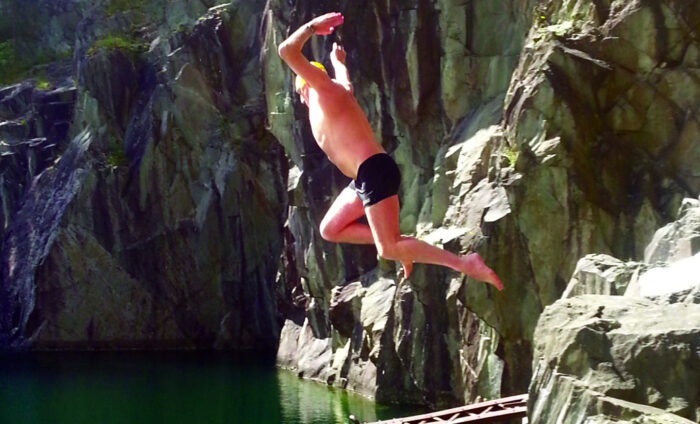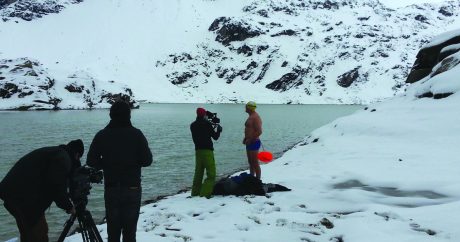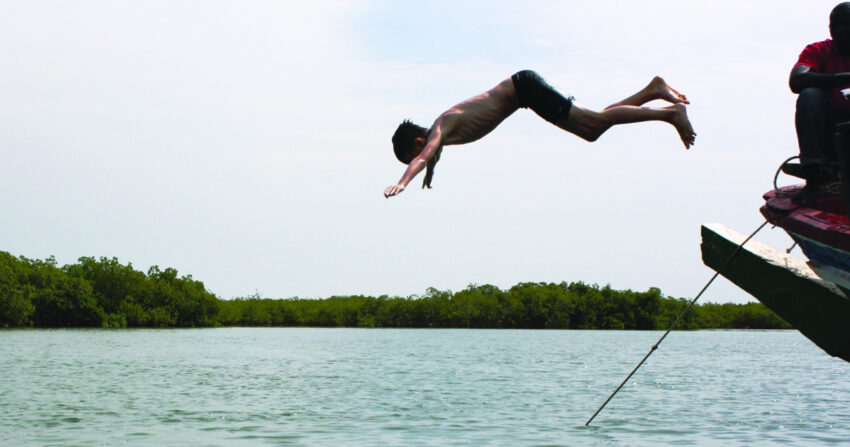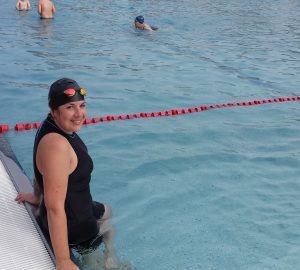
Seven Ways to Become a Better Swimmer
What does becoming a better swimmer mean to you? Your first thought might be that better equates to faster. For pool swimmers this is almost always the case. Training is geared towards helping you propel yourself through the water over a set distance in as short a time as possible. The components to work on include fitness, strength and technique but whichever of these factors you look at, the end goal is always speed.
While there is nothing wrong in chasing speed – in fact it can be fun and motivating – open water swimming gives a lot more ways in which to become a better swimmer. Here are seven suggestions.
Swim further
Freed from the need to change direction every 25 or 50m, open water swimmers have endless opportunities to become better swimmers by increasing the continuous distance they can swim. A good challenge for people starting out in open water is a mile and this distance has become very popular. If you’ve only ever swum in a pool then not being able to stop for a breather or simply being far from shore and unable to see the bottom is initially hard or even frightening. Once the mile is mastered there are plenty of other benchmarks to aim for: 5km, 10km, the English Channel and beyond. Yes, people do race over longer distances and keep records of their times so speed is a factor but unless you’re a professional the key factor is the distance. Swimming the English Channel is a marvellous accomplishment, whether it takes you seven hours or 27.
Swim colder
In the UK most indoor pools are kept at between 26 and 31 degrees Celsius. If you’re used to the latter, the former can feel distinctly chilly. Open water is generally much cooler and so beginners often opt for wetsuits. But why not experiment to see what you can cope with if you leave the wetsuit at home? Experienced swimmers become very attuned to how water at different temperatures feels, and also to their tolerances.
With exposure you become acclimatised and it’s amazing what some people can do. If you’ve only ever swum in a warm pool, 20 degrees will seem cold whereas English Channel swimmers would describe it as ‘balmy’ or ‘tropical’. For reference, the Channel is typically between 15 and 17 degrees when most people swim it. Extreme cold water swimming has become more popular recently. This usually means swimming in water of less than five degrees – an intense but rewarding experience. These ‘swims’ are often little more than brief dips, but just the act of overcoming our natural distaste of head-crunching cold, even for just a few seconds, is very satisfying.
Colder and longer
The limiting factor for long swims in open water is often not fatigue or boredom but cold. ‘Swim failure’ occurs when the body attempts to retain heat in the core by restricting blood flow to the limbs. This makes the arms feel numb, heavy and eventually unable to move. Sheer discomfort will stop many people from swimming before swim failure occurs, although plenty of swimmers have been pulled out of swims because of hypothermia. With acclimatisation your ability to withstand a particular temperature can increase dramatically. When starting out you may find 16 degrees is intolerably cold but experienced swimmers can cope with this for many hours.
The current gold standard in cold water swimming is the ‘Ice Mile’, defined as swimming a mile in water of less than five degrees. This is an extreme challenge and should only be attempted after lengthy acclimatisation and with appropriate safety procedures in place.

How low can you go?
Be more adventurous
Open water swimming allows hundreds of possibilities for exploration and adventure. Seize them. These range from the spontaneous and simple – a quick skinny dip at a secluded beach for example – to the planned swimming expedition towing all you need for survival in a raft. If you’re not ready to go it alone then sign up for an island hopping swimming vacation or enter an event in a part of the country (or the world) you’ve always wanted to visit.
Learn new skills
Open water swimming involves a lot more than putting your head down and flailing your arms and there are plenty of different water skills you could learn. Next time you’re at a beach, jump into the waves and practise body surfing. Or try diving under the breakers and see how long it takes you to reach the green backs (preferably do this in a part of the beach supervised by lifeguards). Seek out choppy water and practise timing your breathing to avoid swallowing too much water or work on breathing to your weaker side. If you enjoy racing, practise your sighting and turning skills as these can make a big difference to your overall performance and enjoyment. If you’re temporarily confined to a pool, practise or learn the other strokes.
Be more playful
Swimming doesn’t have to be a serious business. If you watch children in water they will usually spend their time playing rather than training. They will invent games that involve jumping, diving, swimming under water or collecting objects from the bottom of the pool. Without realising it, they will be learning and improving their water confidence and skills. So, find somewhere where you can (safely) leap into the water, invite some friends for a game of water polo or invent some fun relays. Wear a silly hat. Carry a waterproof camera inside your costume and whisk it out unexpectedly for some frog’s eye pictures of the world. The more time you spend playing in the water the more you’ll feel at ease in that environment.

Don’t forget to have fun
Improve technique
Working on technique is usually done as a route to swimming faster but why not try to perfect your front crawl merely for the pleasure of becoming more streamlined and graceful in the water and for the feeling of lightness, balance and effortless speed that results from it? Concentrating and focusing on technique while swimming can be very motivating and satisfying and is a good way to get in the zone.








